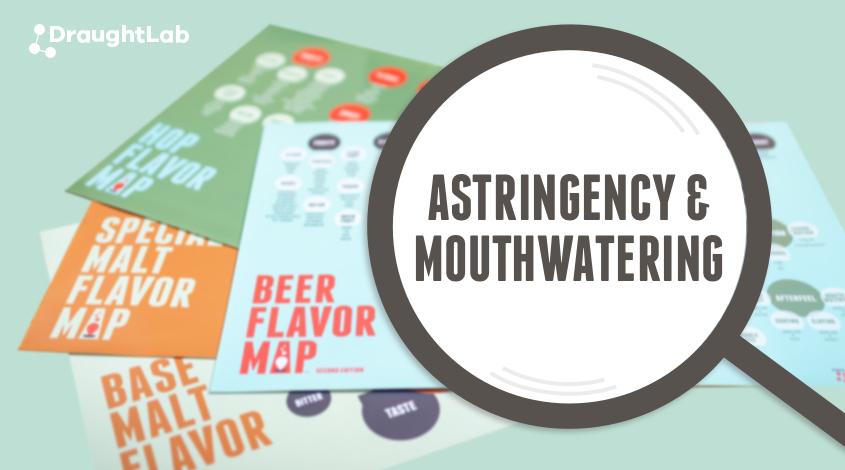
When it comes to discussing flavor, using common language and terminology is extremely important. As sensory scientists, it is our job to interpret the experiences of others, so it makes sense that we must establish common definitions with our tasters. Most flavor terms are well known or easy to describe, but some aren’t as obvious… enter Astringency and Mouthwatering!
These terms get confused often, and on the surface, you can see why. Both are mouthfeel descriptions, meaning they describe physical sensations in your mouth (think sense of touch), as opposed to an aroma or taste. They both refer to the saliva in your mouth and aren’t as obvious as some of the other mouthfeel terms such as texture and temperature.
In truth however, they are opposites.
Astringency
In general, astringency is the sensation of drying out the mouth. It is often described as dry, puckering, or rough, and is commonly associated with certain foods and beverages such as tea, red wine, coffee, beer, and some unripe fruits.
Although there are other factors, astringency is typically caused by substances known as tannins, which are naturally occurring compounds found in various plant sources. Tannins bind with proteins in our saliva, creating a temporary feeling of dryness and roughness in the mouth that can also feel like a slight tightening of our oral tissue (puckering).
Mouthwatering
On the opposite end of the scale is mouthwatering, which is the sensation of the mouth producing extra saliva. It is often associated with sensations of juiciness, succulence, or literal saliva production in the mouth. Think of biting into a ripe pineapple, or a juicy steak.
It can be triggered by a combination of factors, including the presence of certain taste compounds, such as sourness or saltiness. Even simply smelling the food you’re about to eat can make your mouth water. It is our body preparing itself to eat!
Pairing Astringency and Mouthwatering
While astringency and mouthwatering are opposite experiences (mouth-drying as opposed to mouth-watering), they can be played off each other. For instance, red wine is known for its astringent properties due to the presence of tannins. However, because wine is also acidic, it can make your mouth water, especially when paired with salty and fatty foods. It’s no wonder that steak and red wine is one of the classic food pairings!
References
Spielman AI. Interaction of Saliva and Taste. Journal of Dental Research. 1990;69(3):838-843. doi:10.1177/00220345900690030101
Pangborn, R. M., Witherly, S. A., & Jones, F. (1979). Parotid and Whole-Mouth Secretion in Response to Viewing, Handling, and Sniffing Food. Perception, 8(3), 339–346. https://doi.org/10.1068/p080339
Paulina Morquecho-Campos, Floris J. Bikker, Kamran Nazmi, Kees de Graaf, Marja L. Laine, Sanne Boesveldt, Impact of food odors signaling specific taste qualities and macronutrient content on saliva secretion and composition, Appetite, Volume 143, 2019, 104399, ISSN 0195-6663, https://doi.org/10.1016/j.appet.2019.104399
DraughtLab offers practical and approachable Sensory Analysis Solutions that deliver real-world value to food and beverage companies. Visit our website or reach out to us at info@draughtlab.com to learn more!